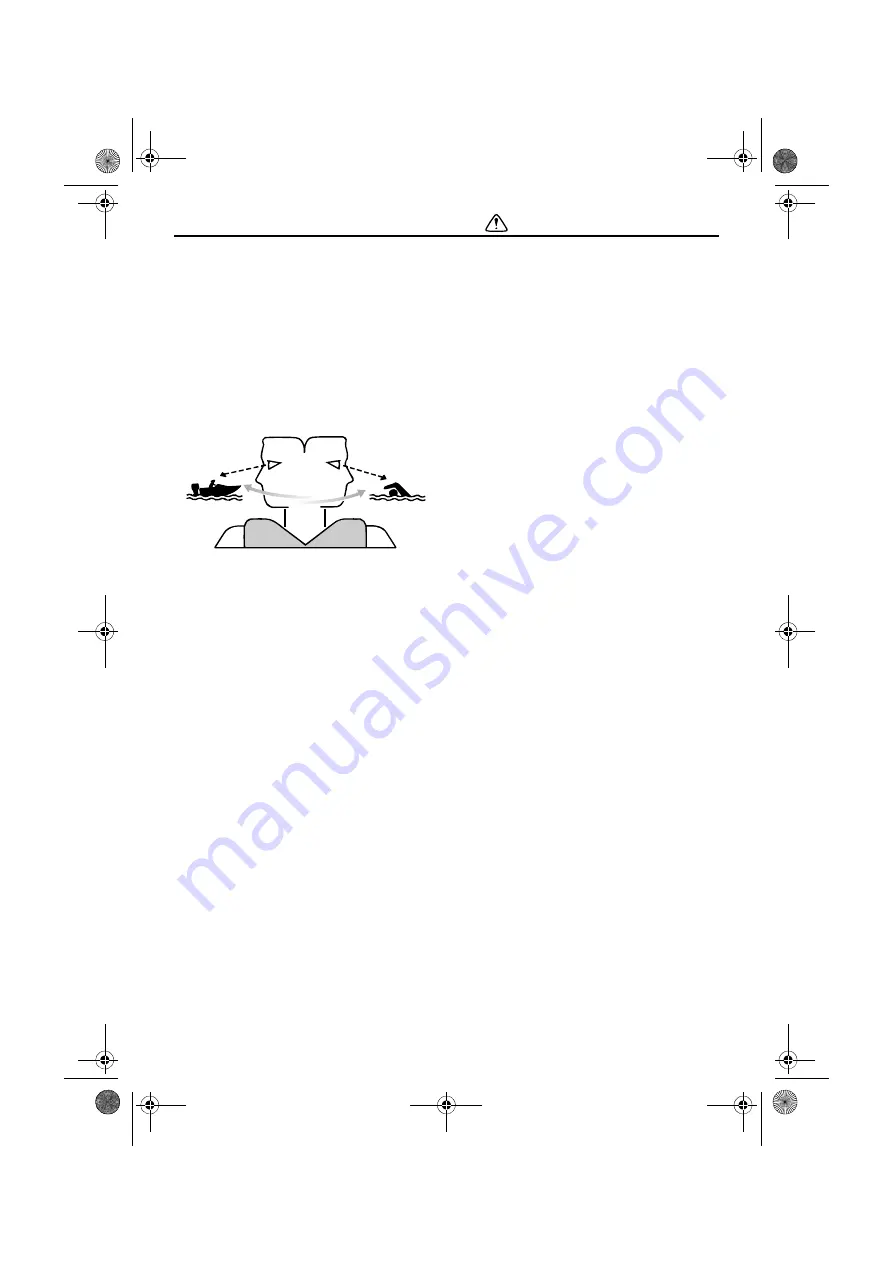
Safety information
3
tions. Overloading or incorrect weight
distribution can compromise the boats han-
dling and lead to an accident, capsizing or
swamping.
EMU33773
Avoid collisions
Scan constantly for people, objects, and oth-
er boats. Be alert for conditions that limit your
visibility or block your vision of others.
Operate defensively at safe speeds and keep
a safe distance away from people, objects,
and other boats.
Do not follow directly behind other boats or
waterskiers.
Avoid sharp turns or other maneuvers that
make it hard for others to avoid you or un-
derstand where you are going.
Avoid areas with submerged objects or
shallow water.
Ride within your limits and avoid aggres-
sive maneuvers to reduce the risk of loss of
control, ejection, and collision.
Take early action to avoid collisions. Re-
member, boats do not have brakes, and
stopping the engine or reducing throttle
can reduce the ability to steer. If you are not
sure that you can stop in time before hitting
an obstacle, apply throttle and turn in an-
other direction.
EMU33791
Weather
Stay informed about the weather. Check
weather forecasts before boating. Avoid
boating in hazardous weather.
EMU33881
Passenger training
Make sure at least one other passenger is
trained to operate the boat in the event of an
emergency.
EMU33891
Boating safety publications
Be informed about boating safety. Additional
publications and information can be obtained
from many boating organizations.
EMU33601
Laws and regulations
Know the marine laws and regulations where
you will be boating- and obey them. Several
sets of rules prevail according to geographic
location, but all are basically the same as the
International Rules of the Road.
ZMU06025
U6DV72E0.book Page 3 Friday, December 19, 2014 3:38 PM







































